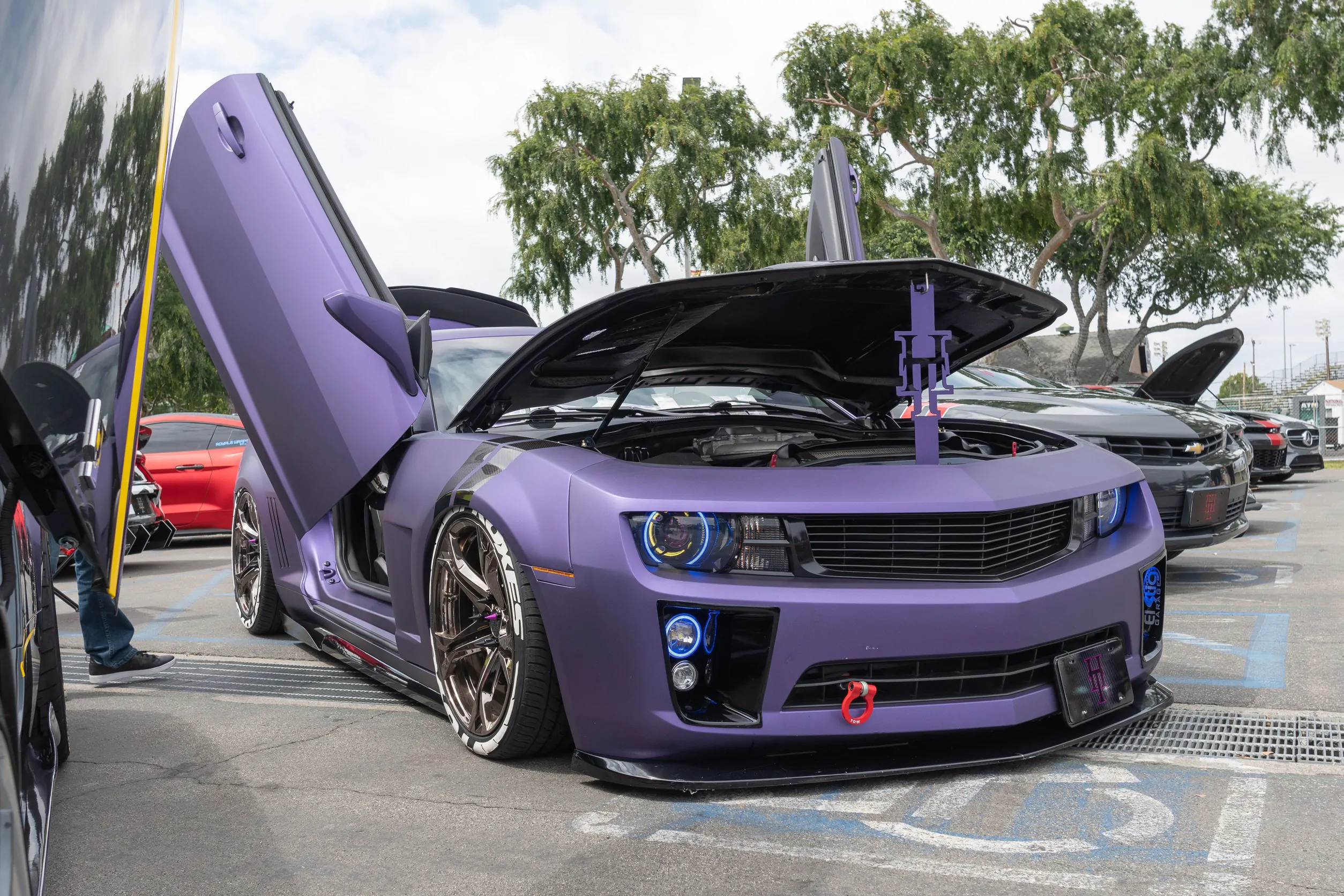

Car culture is all about personal expression, performance, and sometimes, a little rebellion. While some modifications make sense—like improving safety or enhancing drivability—others cross into territory that’s downright dangerous or irritating. Yet surprisingly, many of these illegal car mods aren’t technically against the law in some states or regions. They might be eye-catching or give off street cred, but they also make roads less safe or break basic etiquette. Here are 10 car mods that should be illegal, but somehow still aren’t.
1. Excessively Loud Exhaust Systems
There’s a big difference between a performance growl and a neighborhood-shaking roar. Some exhaust mods bypass mufflers entirely or use cutouts to amplify sound beyond reasonable levels. The result? Deafening noise that disrupts communities, startles pedestrians, and contributes to noise pollution. While some areas have decibel limits, enforcement is inconsistent or nonexistent. These illegal car mods should be universally banned—or at least more tightly regulated.
2. Blinding HID and LED Headlight Conversions
Aftermarket headlight kits are popular, but many are poorly installed or far too bright for street use. Improperly aimed or unshielded HID and LED lights can blind oncoming drivers and reduce visibility on the road. Even if the driver thinks it looks cool, the safety risk is real. Some states have rules around beam intensity, but enforcement is rare. Car mods that risk others’ vision and safety have no place on public roads.
3. Underbody Neon Lights
Neon or LED underglow lights may scream Fast & Furious, but they also create distractions, especially at night. These glowing mods are often in bright or flashing colors, which can mimic emergency vehicles or confuse other drivers. While a few states restrict specific colors, many allow underglow as long as it doesn’t flash or face forward. But let’s be honest: they’re more about style than function, and they create more chaos than clarity.
4. Massive Spoilers with No Function
Spoilers are designed to improve aerodynamics, but only when properly engineered and installed. Many aftermarket spoilers are oversized, poorly mounted, or completely useless on street cars that never go above 70 mph. They might make a car look fast, but they can actually reduce handling and even fall off at high speeds. It’s all visual flex and zero benefit. These illegal car mods are more about ego than engineering.
5. Lowering Cars to Dangerous Heights (a.k.a. “Slamming”)


Lowered cars can look sleek, but extreme drops come with serious risks. Slamming a car can compromise suspension, bottom out on bumps, and reduce the driver’s ability to steer or stop safely. In some cases, it even prevents basic functions like turning into driveways or clearing speed bumps. While mild lowering can improve handling, extreme modifications should be regulated for safety reasons. When your car scrapes over a pebble, it’s too low.
6. Over-the-Top Tint Jobs
Window tinting can help with glare and privacy, but when it’s too dark, it becomes a safety hazard. Excessively tinted windows make it difficult for drivers to see pedestrians, cyclists, or other cars, especially at night. They also prevent law enforcement from seeing inside the vehicle during traffic stops, raising security concerns. Most states have legal limits on how dark tints can be, but many drivers ignore or bypass them. These illegal car mods often slide under the radar despite their risks.
7. Fake Police Equipment
Believe it or not, some car owners install strobe lights, push bars, or sirens to make their vehicle resemble a police car. While it may be done for style or intimidation, it can confuse other drivers and is potentially dangerous. Impersonating law enforcement—intentionally or not—can lead to panic or misuse of road privileges. Some jurisdictions ban this outright, but not all. No civilian car should ever have law enforcement gear unless it’s a restored retired cruiser—for show, not the street.
8. Lift Kits That Ruin Visibility
On the flip side of slamming is the monster truck look—trucks with extreme lift kits that sit feet above other cars. While this may be fine off-road, it becomes a problem on highways where lifted trucks block views, create blind spots, and pose a danger during collisions. Their bumpers often sit above standard car crash zones, making accidents much more deadly. Lifted vehicles should have height restrictions for everyone’s safety.
9. Overloaded Sound Systems That Shake Buildings
Massive subwoofers and bass-heavy systems can literally rattle windows from a block away. While personal music taste is subjective, blasting it so loudly that it disturbs public peace is inconsiderate at best—and dangerous at worst. Loud bass can prevent drivers from hearing sirens, horns, or other vehicles. These illegal car mods often lead to noise complaints and tickets, but they’re still all too common on city streets.
10. Excessive Decals or Obstructive Wraps
Wraps and decals can turn any car into a personal canvas, but sometimes they go too far. If decals cover windows, mirrors, or lights, they pose a major visibility risk. Some wraps also use reflective materials that can blind drivers behind them. And while some are just offensive or tasteless, others mimic emergency markings or camouflage, adding confusion on the road. Car modifications should never interfere with basic safety.
Cool Doesn’t Always Mean Safe
Car mods can be a fun way to express your personality or boost your ride’s performance, but some cross the line from creative to careless. Whether it’s due to noise, visibility, or just plain distraction, these illegal car mods might look good on social media, but can cause real-world problems. If your upgrades put others at risk, maybe it’s time to rethink what’s “cool.” Customization should never come at the cost of safety or common sense.
Seen any outrageous car mods lately? Do you think any of these should be banned? Share your thoughts and mod horror stories in the comments!
Read More
9 Car Mods That Could Get You Pulled Over
Should Car Modding Be Illegal on Public Roads?


Drew Blankenship is a former Porsche technician who writes and develops content full-time. He lives in North Carolina, where he enjoys spending time with his wife and two children. While Drew no longer gets his hands dirty modifying Porsches, he still loves motorsport and avidly watches Formula 1.


Leave a Reply